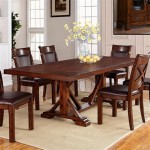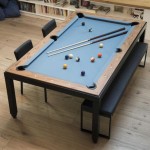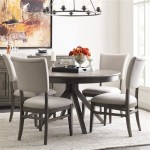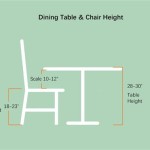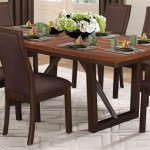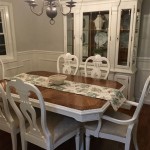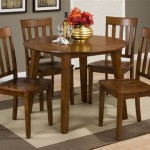Antique French Dining Room Tables
Antique French dining room tables are highly sought-after for their elegance, craftsmanship, and historical significance. Dating back centuries, these tables are not only beautiful but also embody the rich cultural heritage of France. Here is a comprehensive guide to antique French dining room tables, their history, styles, materials, and how to identify and acquire them:
History of Antique French Dining Room Tables
The history of French dining room tables is closely linked to the evolution of French furniture design. In the 16th century, during the Renaissance period, Italian influences began to shape French furniture, including dining tables. These tables were often made of oak or walnut and featured intricate carvings and turned legs.
In the 17th century, during the Baroque period, French furniture became more elaborate and opulent. Dining room tables were often grand in scale and adorned with elaborate carvings, gilding, and marquetry (inlaid wood designs). The reign of Louis XIV, known as the "Sun King," marked a golden age for French furniture making, and his patronage of craftsmen like André-Charles Boulle led to the development of exquisite dining tables.
The 18th century brought the Rococo style, characterized by graceful curves and delicate ornamentation. Dining room tables from this period were often made of rosewood or mahogany and featured cabriole legs, bronze mounts, and giltwood embellishments.
In the 19th century, the Empire style emerged, inspired by ancient Roman and Egyptian motifs. Dining room tables from this period were typically made of mahogany or bronze and featured straight lines, geometric shapes, and military-inspired details.
Styles of Antique French Dining Room Tables
Antique French dining room tables come in a wide range of styles, reflecting the various periods and influences that have shaped French furniture design. Some of the most common styles include:
- Renaissance: Characterized by intricate carvings, turned legs, and use of oak or walnut
- Baroque: Elaborate and opulent, with gilding, marquetry, and grand scale
- Rococo: Graceful curves, delicate ornamentation, and use of rosewood or mahogany li>Empire: Straight lines, geometric shapes, military-inspired details, and use of mahogany or bronze
In addition to these main styles, there are also regional variations in French dining room table designs. For example, tables from Provence often feature rustic charm with turned legs and warm wood tones, while tables from Normandy may exhibit a more maritime influence with nautical details.
Materials Used in Antique French Dining Room Tables
Antique French dining room tables were crafted from a variety of materials, including:
- Oak: A durable wood with a rich grain, often used in Renaissance and Baroque tables
- Walnut: Another durable wood with a darker hue, also popular in Renaissance and Baroque periods
- Rosewood: A rare and exotic wood known for its reddish-brown color and intricate grain, used in Rococo tables
- Mahogany: A reddish-brown wood with a straight grain, commonly used in Empire tables
- Bronze: A metal alloy used to create table bases and decorative elements, especially in Empire tables
- Giltwood: Wood covered with a layer of gold leaf, used to create ornate embellishments
- Marble: A luxurious stone used for tabletops, often found in Baroque and Rococo tables
The choice of materials depended on factors such as the period, region, and availability of resources.
Identifying Antique French Dining Room Tables
Identifying antique French dining room tables requires a combination of knowledge and observation. Here are some key factors to consider:
- Style: Determine the style of the table based on its overall design and characteristics
- Materials: Examine the materials used to construct the table, including wood species, metalwork, and any embellishments
- Construction: Pay attention to the table's joinery, hardware, and any unique features
- Provenance: If possible, research the table's history, including its previous owners and any documentation available
- Condition: Evaluate the table's condition, including any signs of age, wear, or repairs
It is always advisable to consult an expert or appraiser for a professional assessment of an antique French dining room table.
Acquiring Antique French Dining Room Tables
Antique French dining room tables can be acquired through various channels, including:
- Antique dealers: Reputable dealers specialize in antique furniture and can offer a wide selection of dining room tables
- Auctions: Auctions provide an opportunity to bid on antique tables and acquire them at competitive prices
- Online marketplaces: Websites like 1stDibs and Chairish offer a curated selection of antique furniture, including dining room tables
- Private sales: Occasionally, antique French dining room tables may be available from private sellers through word-of-mouth or local classifieds
When acquiring an antique French dining room table, it is essential to conduct thorough research, consider the table's authenticity and condition, and establish a fair market value before making a purchase.

Antique French Country Dining Table Edith Evelyn

La Provencale Antique French Farm Dining Table Country Kitchen Oak With Rectangular Shape Vintage Reclaimed Wood

Antique French Country Dining Table Edith Evelyn

French Antique Reion Dining Table

Classic French Farmhouse Rectangle Dining Table Antique

Shabby Chic Vintage French Style Dining Table And 4 Chairs Etsy

Antique French Country Dining Table Edith Evelyn

Formal French Country Dining Set By Karges

19th Century French Fruitwood Dining Table With Bread Board And Cabriole Legs English Accent Antiques

French Style Luxury Dining Room Set Timeless Designer Masterpieces

